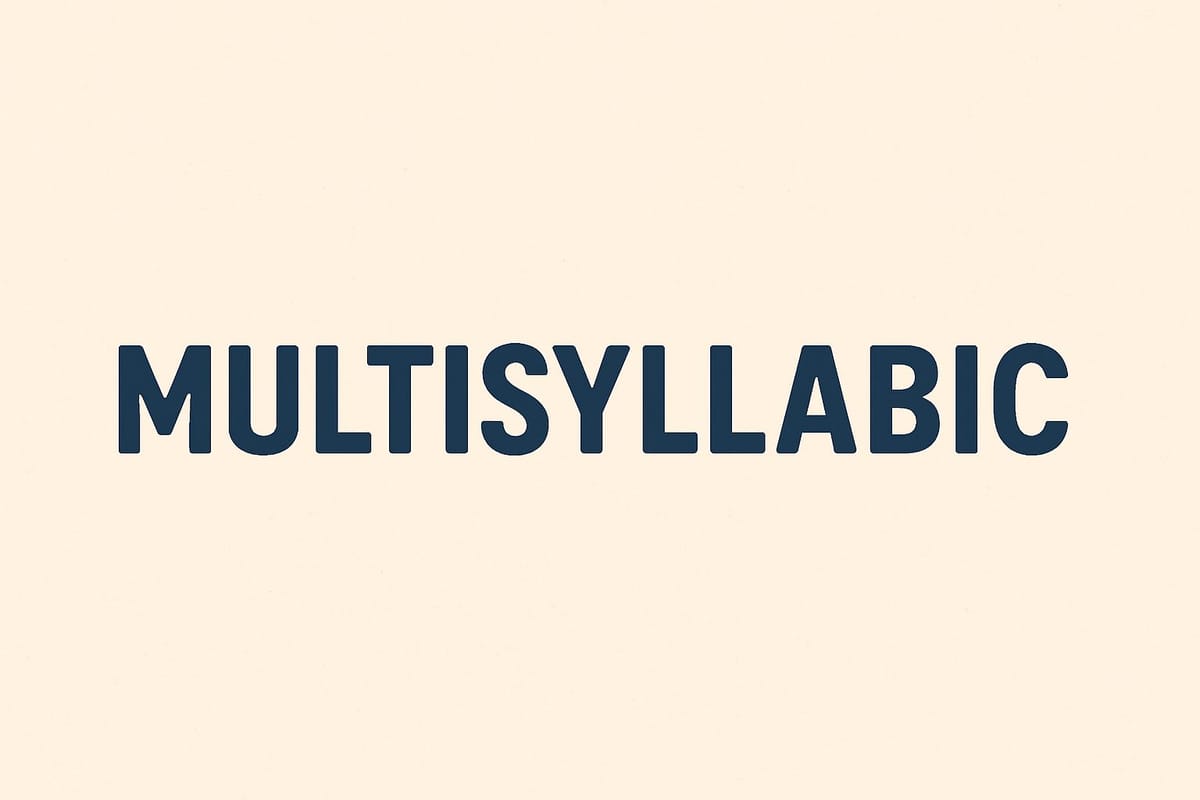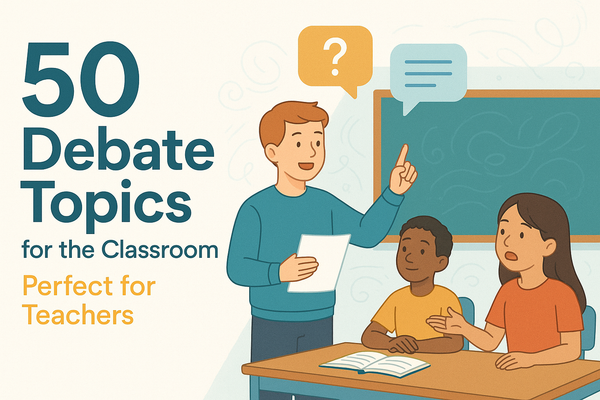Unlocking Strategies to Teach Multisyllabic Words

Reading and spelling are way more than academic skills, as they go beyond the academic setting to lifelong learning. It is essential for teachers to equip students with tools they can use to read fluently, spell accurately, and truly understand whatever they read. One of the biggest roadblocks young readers face? Multisyllabic words. These longer, trickier words can trip up even the most enthusiastic learners, leading to frustration.
That is why teaching students effective strategies to decode multisyllabic words is so important. When you move beyond surface-level tactics like picture cues or random guessing and instead give students a step-by-step process to break down and read complex words, you set them up for real success. In this guide, we will explore practical, classroom-ready strategies that help students confidently tackle multisyllabic words.
What are Multisyllabic Words?
A syllable is a single, unbroken sound or “beat” in a word. It is often centered around a vowel sound and can be as short as one letter (like “a” or “I”) or a combination of letters. So, a multisyllabic word is simply a word that has more than one syllable. These words may have two, three, four, or even more syllables depending on their length and complexity.
For example:
- 2 syllables: tiger, basket, paper
- 3 syllables: elephant, computer, important
- 4 syllables: calculator, impossible, vocabulary
- 5+ syllables: individuality, unintentional, responsibility
Each syllable within the word contains a vowel sound, which becomes the key to breaking it down for reading and spelling. You can also transform spelling lessons with creative activities for better engagement.
Why Multisyllabic Words Matter in Reading Instruction
For early readers, single-syllable words like cat, dog, or run are usually mastered first. But as students move into more advanced reading materials, they are increasingly exposed to longer words - often packed with multiple syllables, prefixes, suffixes, and less familiar word parts.
Struggling to read multisyllabic words can cause:
- Disrupted fluency
- Reduced comprehension
- Loss of confidence
That is why teaching students how to break down and decode these longer words is critical for reading success. When students learn to approach multisyllabic words with a clear strategy, they become more fluent, independent readers.
A Quick Way to Introduce This to Your Students
When teaching what multisyllabic words are, try this mini-activity:
- Say a word like "sunset."
- Clap it out with your students: sun (clap), set (clap).
- Then count the claps: “That’s two syllables!”
- Write the word on the board and underline the vowels in each syllable.
- Ask: “What do you notice?” (E.g., every syllable has a vowel sound.)
It is simple and fun and gets them thinking about syllables as building blocks.
Effective Tips for Teaching Students to Decode Multisyllabic Words
When students encounter longer words, they feel overwhelmed and are never able to pronounce the word at the same time. However, if teachers give them a reliable step-by-step approach, they feel more confident. Meanwhile, it also strengthens their phonics skills and reading comprehension. Following are a few tips that will come in use while you teach multisyllabic words to students.
1. Identify the Vowel Graphemes
Start by guiding students to locate and underline the vowel graphemes in the word. This step helps them visually identify the core sounds. Remind them that vowel teams (like ea, oa, or ie) represent one single sound, even though they are made up of two letters. Focusing on vowel patterns first lays the groundwork for breaking down the rest of the word.
Classroom Tip: Use a small whiteboard or sticky note for each word. This lets students isolate and underline vowels easily during small-group instruction.
2. Circle Familiar Prefixes and Box Suffixes
Once the vowels are identified, have your students look for recognizable prefixes and suffixes. Circle the prefix and box the suffix to visually separate them from the root word.
Why this matters: Many students already have some familiarity with common affixes like pre-, un-, -ing, or -ed. When they isolate these parts, it reduces the word’s complexity and helps them decode the base word more easily.
3. Scoop and Segment the Syllables
Use a pencil or finger to “scoop” under each syllable, encouraging students to blend from left to right. Syllable scooping helps with pacing and rhythm, especially for students who tend to guess or skip over difficult chunks.
Bonus Tip: Once scooped, have students pronounce each syllable slowly and clearly. This reinforces correct pronunciation and builds fluency.
4. Make a Line for Each Spoken Syllable
An alternative to scooping is drawing lines or tapping for each spoken syllable. This kinesthetic activity is especially helpful for auditory or tactile learners who benefit from hearing and feeling the rhythm of a word.
Example: For the word remember, students can draw three lines: re - mem - ber. Then, they can pronounce each syllable separately before blending them together.
5. Use Syllable Rules to Decode Vowel Sounds
Now that the word is broken down, it is time to apply syllable knowledge. Encourage students to identify syllable types - like open, closed, or vowel-consonant-vowel and use this knowledge to decode vowel sounds accurately.
Teaching Tip: Reinforce the six syllable types often in your reading instruction so students can automatically apply this knowledge when decoding unfamiliar words.
6. Blend and Read the Word in Context
After decoding, ask students to blend the syllables together and read the full word. Then, encourage them to use the word in a sentence or read it within the sentence they found it in.
Why context matters: This step reinforces comprehension. If the word does not make sense in context, students know to go back, recheck their decoding, and try again.
7. Repeat and Reread
Finally, encourage students to reread the word and, if needed, the sentence or passage in which it appears. Rereading reinforces fluency and ensures they have fully understood the word’s meaning and usage.
Quick Tip: Repetition builds confidence - especially when students successfully decode and understand a previously intimidating word.
Classroom Activities to Practice Multisyllabic Word Decoding
Teaching strategies is only half the battle - the real magic happens when students get to practice those strategies in meaningful, hands-on ways. Incorporating decoding practice into your daily routine does not have to feel like extra work. In fact, it can be fun, interactive, and seamlessly added to your literacy section.
Here are some classroom-friendly activities that will help your students become more confident in decoding multisyllabic words:
1. Syllable Scooping Races
Turn decoding into a timed game. Write a list of multisyllabic words on the board or hand out printed sheets. Students race against the clock (or each other) to scoop and decode each word correctly.
How to Play:
- Give students a timer (or set one for the class).
- They underline vowel patterns, box suffixes, circle prefixes, and scoop syllables.
- Once they decode a word, they use it in a sentence for extra credit.
Why it works:
It adds a sense of urgency and excitement while reinforcing all the decoding steps. You can use our multisyllabic worksheet to hand out as printed sheets and make the lesson engaging.
2. Multisyllabic Word Sorts
Create sets of multisyllabic words and have students sort them based on patterns like number of syllables, syllable types (open/closed), or prefixes/suffixes.
How to do it:
- Prepare word cards or have students create their own.
- Use categories like “3-syllable words,” “ends with -ing,” or “starts with un-.”
- Let students work in pairs or small groups to sort and discuss.
Why it works:
Sorting helps students notice patterns and reinforces vocabulary structure in a hands-on way.
3. Say It, Map It, Write It
This structured routine gives students a multisensory way to break down and understand longer words.
Steps:
- Say it – The student says the word aloud slowly.
- Map it – They tap or draw lines for each syllable.
- Write it – They segment each syllable, write the full word, and check the spelling.
Bonus Idea: Add a comprehension twist by asking them to define or use the word in a sentence afterward.
4. Syllable Detective
Encourage students to become "word detectives" in their independent reading books. Their mission? To find and decode multisyllabic words.
How to implement:
- Give each student a sticky note or a small notebook.
- Ask them to record 3–5 multisyllabic words they find during reading time.
- Later, they decode the words using the strategies you have taught and share them with the class or in small groups.
Why it works:
It applies skills in a real-world context and encourages independent problem-solving.
5. Prefix + Suffix Puzzles
Create word puzzles where students combine different prefixes, root words, and suffixes to build real (and sometimes silly) multisyllabic words.
How to do it:
- Use word parts like re-, un-, play, mark, -ing, -able.
- Students mix and match to create multisyllabic words.
- Then, they decode, define, and use them in context.
Why it works:
It builds vocabulary, word recognition, and decoding skills in one go - and students love the creative aspect.
6. Whiteboard Word Building
This quick whole-class activity requires only whiteboards and markers.
Instructions:
- Call out a multisyllabic word.
- Students write it by first scooping the syllables, then decoding and writing it down syllable by syllable.
- Check together as a class and discuss the strategy used.
Teacher Tip: You can project words on the board and model the process for struggling students as well.
7. Syllable Scoop Relay (Team Game)
Divide the class into small teams. One member at a time races to the board to:
- Underline vowel graphemes
- Box/circle affixes
- Scoop syllables
- Read and say the word.
- Rotate players and give points for correct scoops and decoding.
Why it works:
This encourages collaboration and peer learning while reinforcing decoding in a high-energy setting.

Common Misconceptions About Teaching Multisyllabic Words
When it comes to helping students tackle longer, more complex words, it is easy to fall into certain instructional traps. As teachers, it is essential to reflect on some common misconceptions about teaching multisyllabic word reading - especially as students transition from basic decoding to more advanced literacy skills. Let’s take a look at a few misunderstandings.
Misconception 1: Focus Too Heavily on Syllable Division Rules
While syllable division patterns like VCV (vowel-consonant-vowel) can be helpful in some cases, relying too heavily on rigid rules can actually confuse struggling readers. These patterns do not always apply consistently across words, and expecting students to memorize and apply them accurately every time can add unnecessary cognitive load.
What to do instead:
- Rather than teaching strict syllable rules, focus on helping students become flexible decoders.
- Teach them to look for recognizable word parts (prefixes, suffixes, vowel patterns) and blend naturally.
- Encourage flexible thinking, trial and error, and context clues over rigid division methods.
Misconception 2: Foundational Skills Automatically Lead to Success with Longer Words
It is easy to assume that once a student knows letter-sound relationships and basic phonics, they are ready to tackle multisyllabic words on their own. But that is often not the case.
What to do instead:
- Explicit instruction is key.
- Students need to be taught how to apply their foundational skills to larger chunks of language. You can also incorporate various classroom activities to enhance listening and speaking skills.
- Move from simple sound-letter decoding to decoding multi-part words, showing how those early skills evolve into tools for more advanced reading.
Misconception 3: Once Taught, Foundational Skills Do Not Need Revisiting
Some students do retain early phonics knowledge well - but for many, especially those who struggle, revisiting vowel patterns and grapheme-phoneme correspondences is critical for long-term success.
What to do instead:
- Keep foundational skills in rotation during instruction.
- Regular review of vowel sounds, blending techniques, and phoneme manipulation will help students become more confident and automatic when faced with tricky multisyllabic words.
Misconception 4: Reading Words in Isolation Is Enough Practice
Practicing isolated word reading has its place, but it is not the full picture. If students only work on decoding individual multisyllabic words, they may struggle to transfer that knowledge to real reading situations.
What to do instead:
- Incorporate connected text into every lesson.
- Even if it is just a few sentences or a short paragraph, practicing in context helps students develop fluency, comprehension, and confidence.
- It bridges the gap between word study and authentic reading.
Conclusion
Mastering multisyllabic words is a game-changer for student fluency and reading comprehension. By using effective decoding strategies, addressing misconceptions, and creating engaging classroom activities, you empower your students to tackle even the toughest words with confidence.




